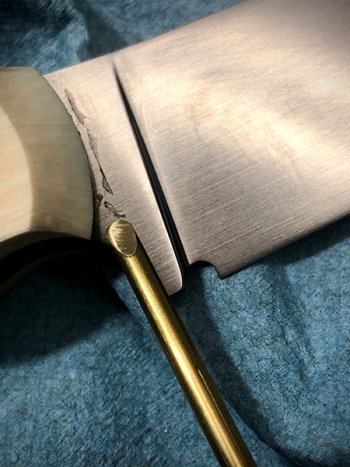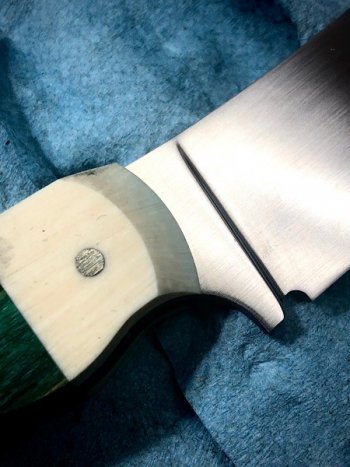Your knife is all ready for scales! Superglue one of the scales on (just a couple drops to hold it) let dry, drill holes in scale from (tang side), trace outline of tang on the back of the scale. Next Superglue the other scale on (line it up, close is fine for now), drill holes using first set of holes as a guide. After the pin holes are drilled, knock both scales off and put them front side to front side (insert your pins so everything will line up). The tangs outline you traced will show, rough cut the scales but leave enough meat to finish grind scales to size (I use my HF Bandsaw on Swag table), next flatten the scales in preparation for Glue up. Finish the front of the scales as you would normally on a full tang knife. Put the scales on the knife as if you were epoxing them on including the pins. Clamp towards the front (I use a spring clamp), take a Q-Tip and smear the wax on the Ricaso and front of the scales on both sides. Disassemble and do your Glue up as you normally would but don't disturb the wax. As Opaul said dont go nuts with the Epoxy near the Ricaso! I mount this whole mess in a vice with the tip of knife pointing up so the epoxy won't run down the blade. When its dry take an Xacto knife and VERY CAREFULLY pry it under the epoxy an it should just snap off! I may try that brass rod trick next time! A bit long but if I missed anything just ask.
PS i buy the 10 packs of Gel Superglue from HF




